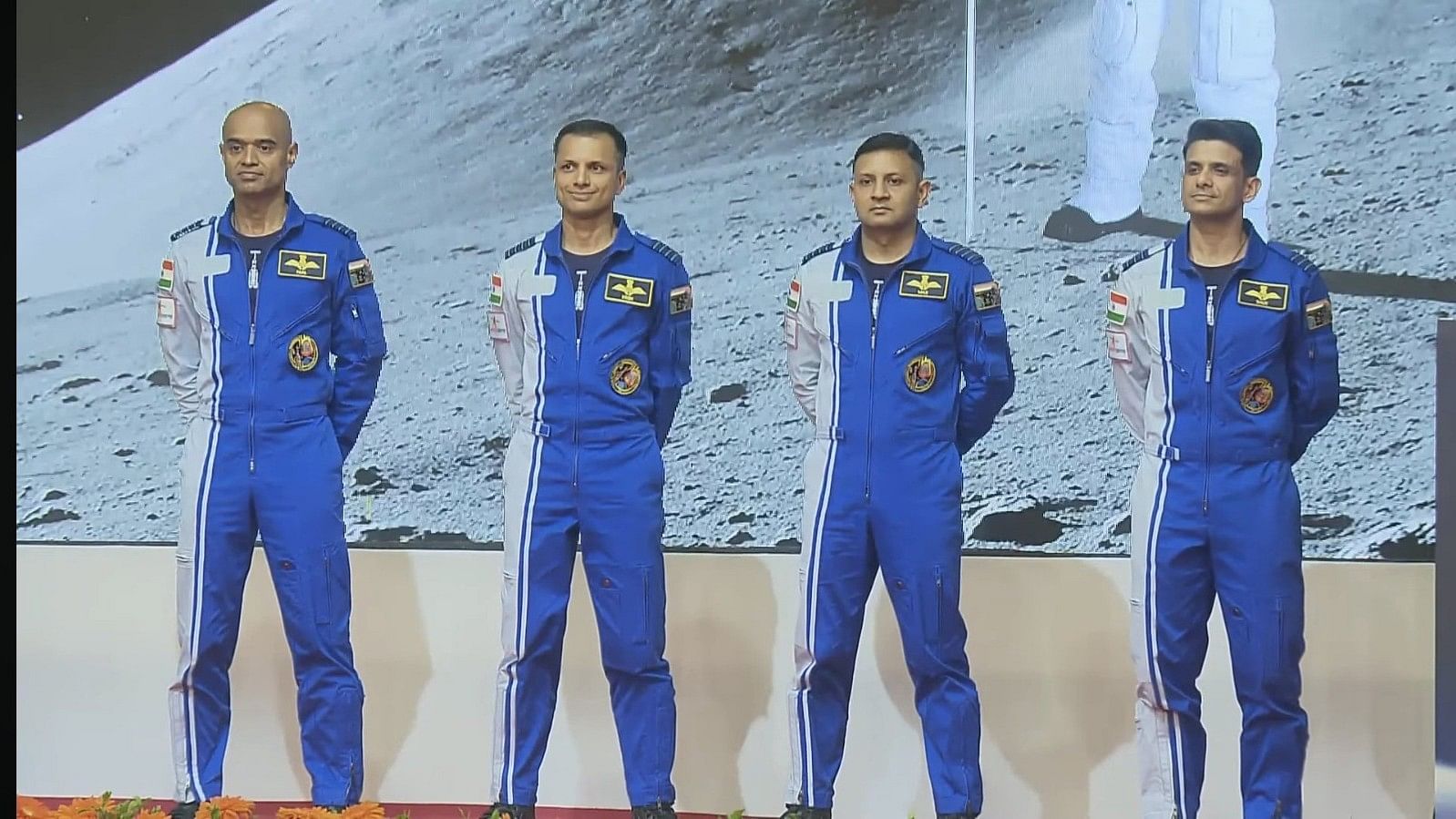
Group Captains Prasanth Balakrishnan Nair, Ajit Krishnan and Angad Pratap and Wing Commander Shubhanshu Shukla, the four astronauts selected for the Gaganyaan mission are bestowed ‘astronaut wings’ by Prime Minister Narendra Modi.
Credit: PIB Photo
Thiruvananthapuram/New Delhi: After months of speculation, Prime Minister Narendra Modi on Tuesday disclosed the names of the four Indian astronauts, who are all highly experienced Indian Air Force test pilots. In that group, a few of them will travel to space next year in an Indian spacecraft.
Group Captains Prasanth Balakrishnan Nair, Ajit Krishnan and Angad Pratap, and Wing Commander Shubhanshu Shukla are the four astronauts selected for the ambitious Gaganyaan programme, which is currently going through the final set of testing trials.
“The four astronaut-designates are not just four names or individuals, they are four Shakti carrying the aspirations of 140 crore Indians into space,” the prime minister said while bestowing the ‘astronaut wings’ to the four at a function at Vikram Sarabhai Space Centre in Thiruvananthapuram.
Attired in half-blue and half-white uniforms, the four astronauts are IAF test pilots with a minimum of over 2,000 hours of flying experience.
The senior-most of them is Group Captain Prasanth Balakrishnan Nair, who has over 3,000 hours of flying experience and has the experience of commanding a Su-30 squadron. The IAF veteran with a call sign, Papa, will be the team leader.
‘Big difference’
Modi, who reviewed the progress of the Gaganyaan mission, said an Indian would be going to space 40 years after Rakesh Sharma in 1984, but a big difference is that this time the spacecraft and the rocket would be indigenous, unlike the Russian Soyuz T-11 rocket that took Sharma—also an IAF test pilot—to space.
While Gr Cap Nair, Krishnan, and Pratap are flying instructors, Shukla is a flight combat leader. All of them have extensively flown IAF combat jets like Su-30MKI, MiG-21, MiG-29, and Hawk, besides transport aircraft like the AN-32 and Dornier. Barring Nair, the other three have also flown the Jaguar.
Test pilots are generally chosen as astronauts because of their experience of handling new aircraft or systems that generally come with inherent risks.
While lauding the dedication of the astronauts, Modi cautioned that the celebrity attention to the four could create disturbances in their training. He appealed for cooperation with the astronaut-designates and their families so that they could continue their training without any distraction.
The IAF pilots were selected through a meticulous selection process and were imparted rigorous 13 months of training at Russia’s Gagarin Cosmonaut Training Centre on several areas, including aerobatic flight and survival training.
They are now undergoing training in Isro’s new facility using simulators and virtual reality tools. Special yoga modules have also been prepared for them as part of ensuring physical fitness.
Gaganyaan — the country’s maiden human space flight mission — envisages demonstration of human spaceflight capability by launching a crew of three members to an orbit of 400 km for three days mission and bring them back safely to earth by landing in Indian sea waters.
Space station by 2035
The prime minister said that by 2035, India would have its own space station. He said that Indian space scientists would also be exploring Venus, apart from going to the Moon once again and retrieving samples from the surface.
“India is becoming a global commercial hub in the field of space. The country’s space economy will grow fivefold and touch 44 billion dollars in the next 10 years,” the prime minister said.
Modi inaugurated three major space infrastructure projects worth Rs 1,800 crore - the PSLV integration facility at Satish Dhawan Space Centre in Sriharikota, the semi-cryogenics integrated engine and stage test facility at the Isro propulsion complex at Mahendragiri, and the Trisonic Wind Tunnel at VSSC.
